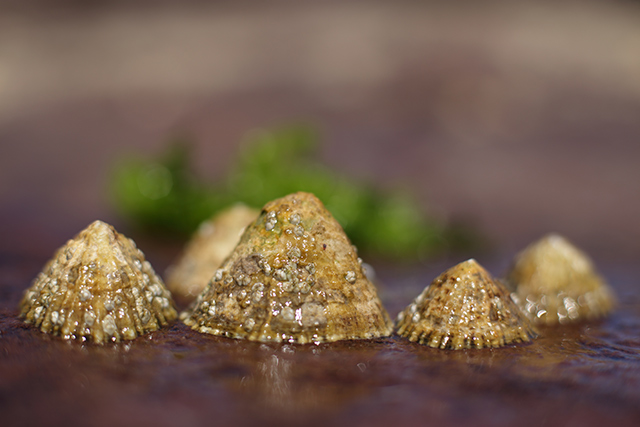
Limpets are aquatic snails that can be found in both fresh and salt water. Their broad shells are shaped like dishes and their muscular feet make them difficult to pry off the rocks that they make their homes.
While studying these commonplace gastropods, researchers from Trinity College Dublin (TCD) learned that limpets could sense even the slightest bit of damage dealt to their shells. A limpet's knowledge of its shell was so thorough that it could modify the damaged sections to increase their durability in case that particular spot got injured again.
If that sounds familiar, it's because human bones heal in much the same way. During a short period of time after the injury, the new bone that grows over the break is stronger than the older material surrounding it. The new bone eventually matches the strength of the existing ones once the injury finishes healing. (Related: A species of sea snail found to hasten wound recovery.)
A limpet's shell crumples like a car to protect its organs
The TCD researchers learned that the topmost part of the limpet's conical shell fulfilled the same protective function as the "crumple zone" of a ground vehicle. The apex absorbs most of the energy imparted by an impact.
The majority of the damage is concentrated in that part of the shell, allowing much softer parts to escape unscathed.
When a car gets damaged, its owner usually takes it to the repair shop. When the shell of a limpet receives damage, the mollusk performs the repairs itself – and it does a better job than its human counterpart.
Limpets are apparently aware of the full extent of the damage incurred by their shells. They know exactly where to add new biological matter so that damaged structures will be reinforced. Eventually, the damaged portion recovers its original durability.
Limpets know how to rebuild their shells to be stronger
The research team decided to determine the ways that limpets responded to very specific types of damage. They replicated several of the common natural stresses that the animals would encounter in the wild.
First, they dropped weights on limpets to simulate the pummeling of strong waves and falling rocks during bad weather. Next, they used a metal file on the shell to model the cumulative effects of abrasion and weathering.
Finally, they copied the way starfish, shorebirds, and certain other predators attack limpets. They used a nail to punch a hole in the apex without penetrating all the way through the shell.
They reported that the limpets repaired that damage from inside the protection of their shells. In 60 days time, they were able to restore the protective strength of their shells.
Interestingly, the repaired parts were thinner than the undamaged sections. But the mechanical strength of the thinner parts equaled their thicker counterparts.
"Our study shows that limpets are able to repair damage to their shell, both visually and functionally, and that they are also able to restore mechanical strength in as little as a month," said TCD researcher Maeve O'Neill, one of the two-co-authors of the paper. "The way they do this is essentially similar to how bones heal in mammals, as the process is at least partially carried out by the deposition of new material."
Want to know more about the healing properties of snails that can be used to tend our wounds better? Visit Ecology.news.
Sources include:
Please contact us for more information.






















